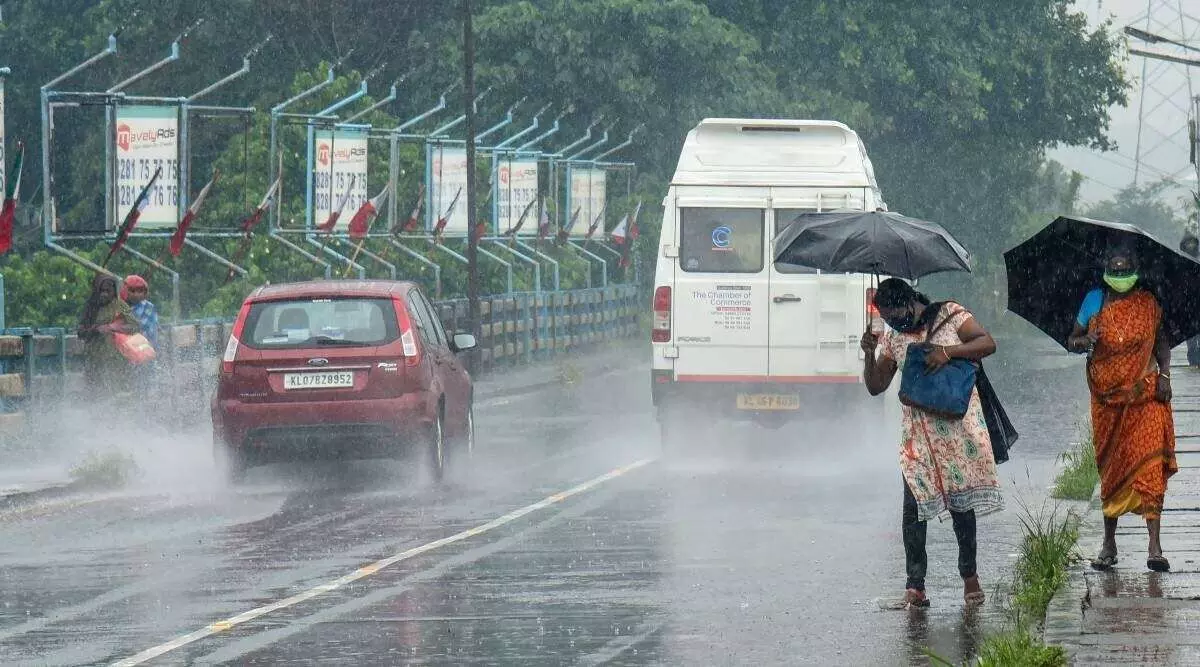Rest of the Monsoon season likely to be normal: IMD
The primary reason for below-normal rainfall in August would be El Nino and the unfavourable phase of the Madden Julian Oscillation (MJO),
By Newsmeter Network
New Delhi: India is expected to record normal rainfall during the second half of the monsoon season following excess precipitation in July, even as El Nino and other unfavourable conditions may suppress rain in August, the IMD said.
August accounts for around 30 per cent of the precipitation during the monsoon season.
Although El Nino, the warming of waters in the Pacific Ocean near South America, has not impacted the monsoon performance so far, its influence is likely to be visible in the second phase (August-September period) of the monsoon, scientists at the India Meteorological Department (IMD) said.
El Nino weakening monsoon winds
El Nino is generally associated with weakening monsoon winds and dry weather in India. The IMD had earlier warned that El Nino might affect the second half of the southwest monsoon.
"Though the country is expected to experience normal rainfall in August and September, it is likely to be on the lower side (94 per cent to 99 per cent) of the normal (422.8 mm)," IMD Director General Mrutyunjay Mohapatra said at a press conference.
Rainfall recorded between 94 per cent and 106 per cent of the long-period average (LPA), or 50-year average, is considered normal.
Rainfall in August is predicted to be below normal (less than 94 per cent of LPA), but the situation is expected to improve comparatively in September, the IMD said.
Normal rainfall is critical for India's agricultural landscape, with 52 per cent of the net cultivated area relying on it. Additionally, it plays a crucial role in replenishing reservoirs essential for drinking water and power generation throughout the country.
Rainfed agriculture contributes to approximately 40 per cent of the country's total food production, making it a vital contributor to India's food security and economic stability.
Above-normal rainfall in August
The IMD said normal to above-normal rainfall is very likely over east-central India, east and northeast regions, and most subdivisions along the Himalayas in August and September. The east and northeast regions have received 25 per cent less rainfall this season so far.
Below-normal rainfall is predicted in most parts of peninsular India and western parts of northwest and central India.
The primary reason for below-normal rainfall in August would be El Nino and the unfavourable phase of the Madden Julian Oscillation (MJO), according to senior IMD scientist D S Pai.
The MJO is a large-scale intraseasonal atmospheric disturbance originating in tropical Africa and travelling eastwards. It is like a pulse or wave lasting about 30 to 60 days.
During the active phase of the MJO, the atmosphere becomes more favourable for rainfall. This leads to increased cloud cover, stronger winds, and enhanced convective activity, resulting in heavier rainfall over the Indian subcontinent.
"In July, favourable MJO phases facilitated the formation of several low-pressure systems over the Bay of Bengal, which moved along the monsoon trough and brought good rainfall to central and peninsular India. However, this factor is expected to become unfavourable for at least 10-15 days in August," Pai explained.
Four western disturbances brought copious rains to northwest India, while four low-pressure systems produced heavy precipitation over the west coast and central India in July.
The IMD said neutral Indian Ocean Dipole (IOD) conditions are prevailing over the Indian Ocean at present, and the latest climate model forecast indicates that positive IOD conditions are likely to develop during the remaining part of the monsoon season.
A positive IOD is considered favourable for the monsoon.
9% deficit in June
India saw a turnaround in monsoon rains, shifting from a nine per cent deficit in June to 13 per cent excess rainfall in July, according to Mohapatra.
However, east and northeast parts of the country recorded the third-lowest precipitation (280.9 mm) in July since 1901. The region received an all-time low of 234.8 mm of precipitation in July last year and 249.5 mm in 1903.
On the other hand, northwest India recorded the highest rainfall in July since 2001, at 258.6 mm.
Mohapatra pointed out that the east and northeast regions have been witnessing a decreasing trend in monsoon rains and an increasing trend in mean temperature and minimum temperature.
The IMD chief added that India recorded 1,113 heavy rainfall events and 205 extremely heavy rainfall events in July, the highest in five years.
16% excess rainfall in Andhra
Excess rainfall in July made up for June's deficit in Andhra Pradesh, registering normal rainfall for both the months cumulatively. The state recorded 16 per cent excess rainfall in July, logging 151.5 mm rainfall on average across the state against the normal range of 131.1 mm whereas June suffered a deficit of 37 per cent.
On adding the quantum of rainfall in both months, the state recorded rainfall of 210.7 mm against the normal of 225.2 mm.
In July, except three districts, Annamayya, Chittoor and Tirupati, including Yanam, which recorded deficit rainfall, all the other districts registered between normal and "large excess rainfall". Five districts logged "large excess rainfall" and eight districts each recorded excess and normal rainfall.
Inputs from PTI